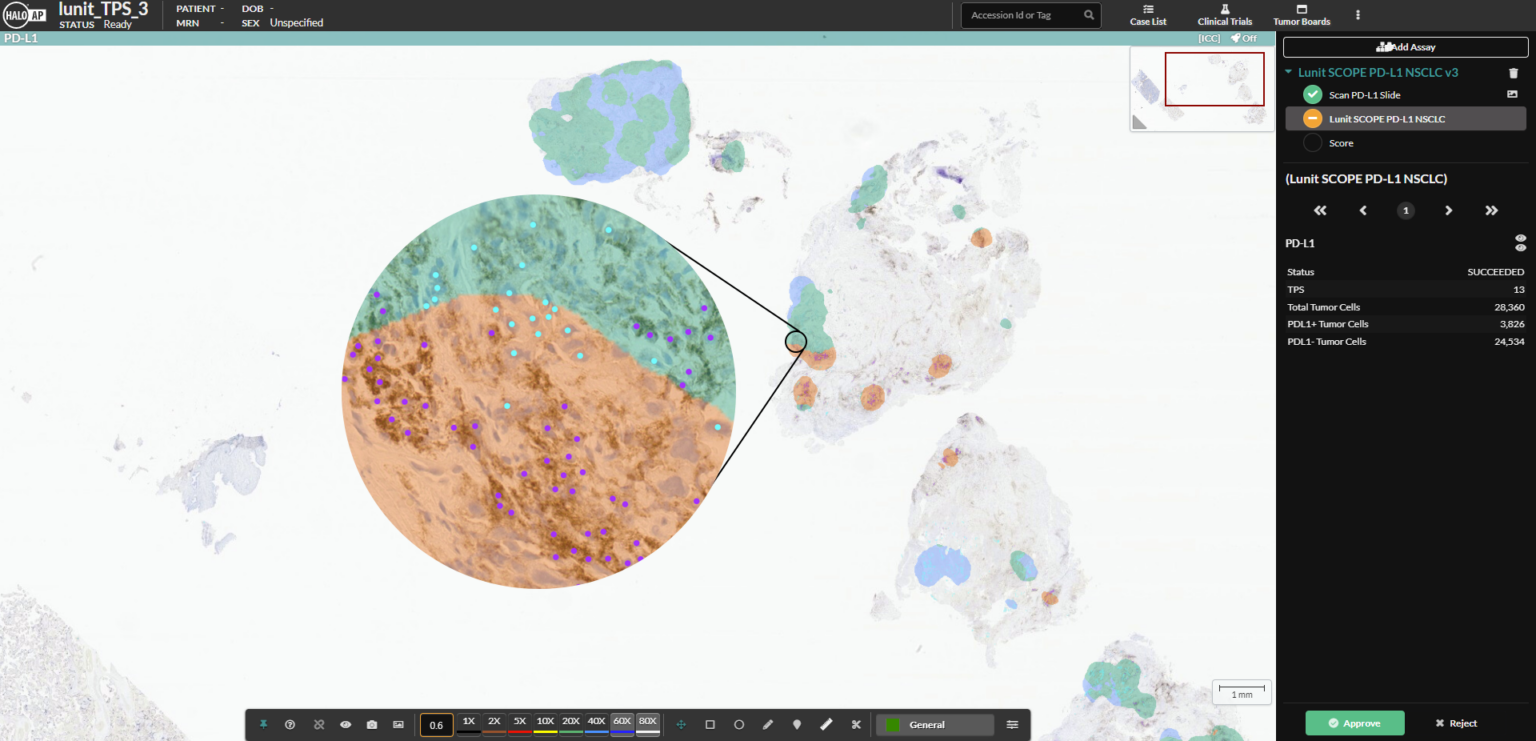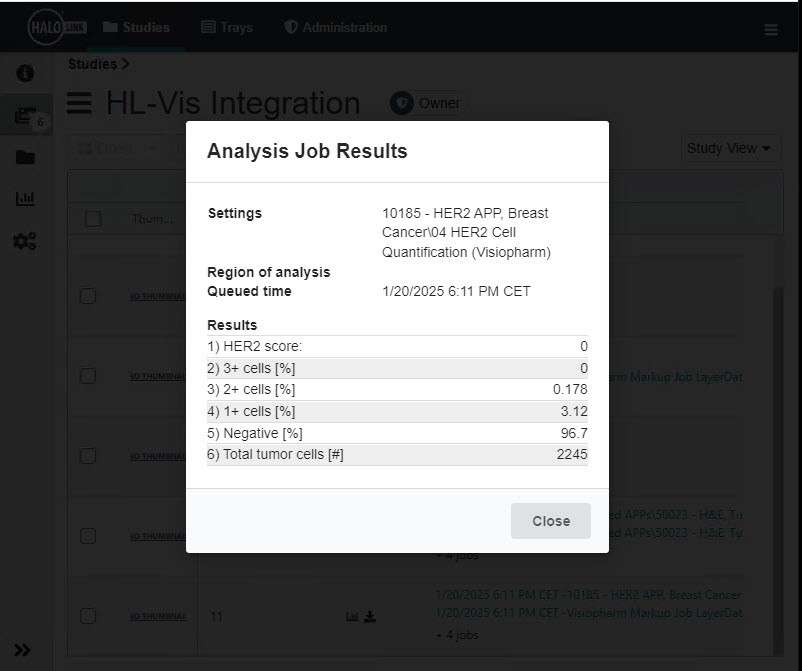Open Pathology and AI Integrations: Empowering Labs with Choice

In digital pathology, advancements and proliferation in artificial intelligence (AI) and digital laboratory equipment are enabling streamlined workflows and new insights. However, they can also multiply the potential challenges laboratories face with software integration. To fully leverage these advancements, laboratories need the capability to seamlessly integrate different tools into their digital pathology ecosystem. Open pathology embodies this approach, enabling labs to implement the pathology platform(s), AI, and laboratory equipment of their choice.
Digital pathology platforms designed for open pathology offer users substantial advantages, allowing the creation of digital pathology ecosystems optimized for their lab’s needs and able to evolve with advancing technologies. Integrated systems adapted to users’ specific workflows enable increased efficiency through streamlined interfacing, requiring fewer logins and switches between programs. Digital pathology solutions that don’t support open integrations can trap users within a limited ecosystem, preventing them from fully benefiting from AI and other emerging technologies. As AI continues to rapidly advance, flexibility in digital pathology is more essential than ever.
At Indica Labs, we’ve been committed to open pathology since our founding, and this focus has guided the development of our HALO platforms for both life sciences and clinical applications. In the rest of this blog post, we’ll discuss how we’re enabling open pathology in our platforms and explore three of the partnerships through which we’re integrating leading third-party AI into our platforms.
Indica Labs’ Commitment to Open Pathology
Indica Labs is dedicated to supporting and enabling open pathology throughout the design, implementation, and use of our platforms. This commitment empowers labs to implement a digital pathology ecosystem customized to their specific needs and workflows.
Supporting Open Standards
- We support open standards and are developing toward them in our platforms, freeing users to work across diverse data formats and tools. For images and annotations, our platforms can read both OME and DICOM files and can rewrite native formats into OME.TIFF.
- For AI models, we support the ONNX format, enabling users to easily transfer models between HALO AI and other platforms. Users of our HALO AI deep learning toolbox can both import models in ONNX format and export trained models in this format.
- For LIS/EHR integration, we support HL7 and HL7 FHIR, facilitating streamlined integration between HALO platforms and laboratory information systems or electronic health records through these industry standards.
Championing Integration
- We designed our HALO platforms with open, powerful APIs, supported by comprehensive documentation and sample code, enabling and simplifying custom integrations.
- For HALO® users needing highly specific image analysis functions, we provide software development kits that allow users to mold the platform to their specialized needs and workflows by creating custom modules.
- HALO AP® also has a software development kit that includes example code, support, and a dedicated development environment to facilitate the integration of third-party AI.
Ensuring Choice
- Our platforms are scanner agnostic and support a wide array of image file formats from all leading scanner manufacturers, allowing labs to choose the scanner that best fits their needs. We also actively collaborate with scanner developers to ensure ongoing compatibility.
- We work with third-party image analysis and IMS vendors to enable integration of HALO image analysis with their systems, supporting labs that prefer to use HALO alongside a third-party platform.

AI Integrations in HALO Platforms
With the expanding constellation of AI tools for digital pathology, labs that have implemented AI or plan to do so require a digital pathology platform that enables integration with third-party solutions. Consistent with our commitment to an open pathology ecosystem that ensures choice, we have partnered with leading image analysis and AI developers to seamlessly integrate their solutions and our platforms. These partnerships, including with Lunit, Paige, and Visiopharm, enable labs to choose best-of-breed solutions for clinical and life science applications from among third-party AI tools, HALO AI, and our HALO Clinical AI solutions.
We have partnered with Lunit to develop a fully interoperable solution between our HALO AP® enterprise digital pathology platform and Lunit’s AI pathology products, including Lunit SCOPE PD-L1 Tumor Proportion Score (NSCLC) and Combined Positive Score (Pan-cancer). By generating objective results, Lunit SCOPE PD-L1 can enhance scoring accuracy, particularly in edge cases, improve agreement between pathologists, and reduce reading time. Integration of Lunit SCOPE PD-L1 has already been completed, and the solution can be seamlessly activated in the HALO AP® user interface. Analysis progress, all results, and visual markup images can be reviewed in HALO AP®, so users never have to leave the viewer or shift between systems, streamlining workflows and providing the combined capabilities of both platforms.
Our partnership with Paige is currently focused on the integration of their Diagnostic AI models into HALO AP®. Following initial work developing solutions catering to clinical diagnostics, integration efforts are expected to expand to include the life science segment. The collaboration allows for best-of-breed AI-enabled workflows designed to improve laboratory efficiency, diagnostic quality, and patient outcomes. HALO AP® users will be able to execute Paige’s AI applications and view results directly within the HALO AP® platform.
Representative of our efforts to provide users flexibility for life science applications, we have partnered with Visiopharm to integrate their Oncotopix® Discovery AI-powered image analysis solution and our collaborative image management platform, HALO Link. The integration currently supports viewing Oncotopix® Discovery analysis summary results in HALO Link, enabling a more seamless user experience when working between the platforms, with additional functions to come.

Conclusions
Indica Labs is dedicated to advancing open pathology and empowering labs to implement their choice of technologies, creating custom, scalable workflows that meet their specific needs. By collaborating with other leaders in AI for digital pathology, we are making it easier for users to access industry leading AI tools that will drive improvements in research and cancer diagnostics.
If you’re interested in learning more about how your lab can benefit from the capabilities for open pathology in HALO platforms, contact us at info@indicalab.com to start a discussion with your local field applications scientist or clinical applications specialist.
HALO AP® is CE-IVDR marked for in-vitro diagnostic use in Europe, the UK, and Switzerland. HALO AP® is For Research Use Only in the USA and is not FDA cleared for clinical diagnostic use. In addition, HALO AP® provides built-in compliance with FDA 21 CFR Part 11, HIPAA, and GDPR.
Lunit SCOPE PD-L1 is CE marked in Europe and has not been cleared or approved by the US FDA and is intended For Research Use Only.
Paige Prostate Detect, which is a component of The Paige Prostate Suite, is FDA approved for detecting prostate cancer in the U.S. It is also CE-IVD and UKCA compliant. When deployed in HALO AP®, Paige Prostate Detect is For Research Use Only in the USA and is not FDA cleared for clinical diagnostic use.